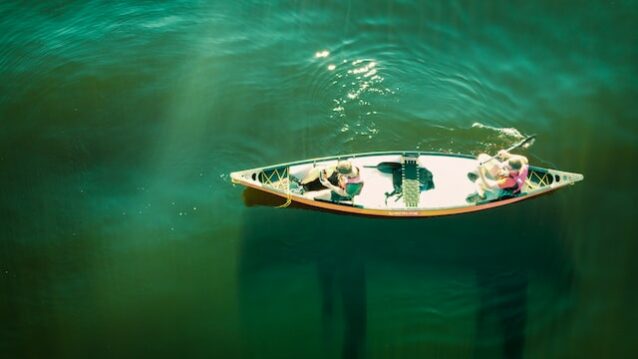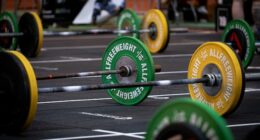Kayaks are designed for use on the open sea, while canoes are intended to stay close to shore. Kayaks feature a closed cockpit that allows you to stay dry and offer more stability than canoes in rough water. Canoes provide great storage capacity but require more technical skill when navigating tricky waters.
The history of kayaks and canoes
(Brandon McDonald on Unsplash)

Kayaks and canoes are both types of watercrafts that have been used for centuries by cultures around the world. Kayaks are typically smaller and more manoeuvrable than canoes and are designed for use in rougher waters. Canoes are usually larger and more stable, making them better suited for calm waterways.
Both kayaks and canoes were originally developed by indigenous peoples for transportation and fishing. Kayaks were first used by the Inuit people of Alaska and northern Canada, while canoes were first used by the Native Americans of North America.
Kayaks are typically made from a lightweight frame covered in waterproof fabric, with a cockpit that is sealed to keep out water. Canoes are usually made from a heavier wood or fibreglass hull, with an open deck that allows users to paddle from a seated or kneeling position.
Both kayaks and canoes can be paddled solo or with multiple people, depending on the size of the craft. Kayaks are often used in racing events, while canoes are more commonly used for recreation or leisurely travel.
The different types of kayaks and canoes
(Johnny Briggs on Unsplash)

There are two main types of kayaks: sit-in and sit-on-top. Sit-in kayaks have an enclosed cockpit where you sit inside the kayak. Sit-on-top kayaks have an open deck where you sit on top of the kayak. There are also inflatable kayaks, which are made of a durable material that can be inflated and deflated as needed.
Canoes are typically open boats that you kneel or sit in. They are stable and good for carrying cargo. Canoes can be made out of many different materials, including wood, aluminum, fiberglass, and plastic.
The pros and cons of kayaks and canoes
There are a few key differences between kayaks and canoes that you should take into account before deciding which one is right for you. Here we outline the pros and cons of each so you can make an informed decision.
The Pros & Cons of Kayaks
| PROS | CONS |
|---|---|
| They are easier to maneuver than canoes due to their design. | You will likely get wetter since you sit lower in the kayak. |
| You can go faster in a kayak thanks to the double-bladed paddle. | Kayaks can tip over more easily than canoes. |
| Kayaks are more stable than canoes, making them ideal for beginners or those who want a more relaxed experience. | |
| They are easier to transport thanks to their lighter weight and smaller size. |
The Pros & Cons of Canoes
| PROS | CONS |
|---|---|
| You sit higher in a canoe, meaning you will stay drier. | They require more arm strength to paddle since you only have one blade. |
| Canoes are roomier than kayaks, so they’re ideal for groups or families. | They are less stable than kayaks and therefore may not be ideal for beginners. |
| Canoeing is a slower, more peaceful experience since you only have a single-bladed paddle. | Canoes are larger and heavier, making them harder to transport. |
How to choose the right kayak or canoe for you
There are many different types of kayaks and canoes available on the market, so it is important to choose the one that is right for you. The first thing to consider is what type of water you will be using it on. Kayaks are designed for use in calm waters, such as lakes and rivers, while canoes are better suited for rougher waters, such as the ocean.
Another factor to consider is how much storage space you need. Kayaks typically have more storage space than canoes, so they are a good choice if you plan on carrying any gear with you. Canoes also have the advantage of being able to accommodate more people, so they are ideal for group trips.
When choosing a kayak or canoe, it is also important to consider your budget. There are many different price points available, so you should choose one that fits within your budget. However, it is important to remember that cheaper options may not be as durable or offer as many features as more expensive options.
Finally, it is important to read reviews before making your purchase. This will help you get an idea of which products are popular and which ones have had issues in the past. By taking all of these factors into consideration, you should be able to find the perfect kayak or canoe for your needs.
What type of canoe is best for beginners?
The best type of canoe for a beginner depends on a number of factors, including your budget, where you’ll be paddling, and what kind of activities you’ll be doing in your canoe.
Here’s a quick rundown of some of the most popular options:
Recreational Canoes: Recreational canoes are designed for casual paddling on calm waters. They’re usually fairly affordable, and they come in a variety of sizes and shapes to suit different needs. If you’re just getting started in canoeing, a recreational canoe is a great option.
Touring Canoes: Touring canoes are designed for longer trips on moving waters such as rivers and streams. They’re often longer and narrower than recreational canoes, making them more efficient to paddle but also more challenging to maneuver. If you plan on doing any serious touring in your canoe, this is the type you’ll want.
Whitewater Canoes: Whitewater canoes are designed for paddling on fast-moving water.
Which type of kayak is best for beginners?
There are many different types of kayaks on the market, and it can be difficult to decide which one is best for you. If you’re a beginner, it’s important to choose a kayak that is stable and easy to control. Here are a few things to keep in mind when choosing a kayak for beginners:
– The type of kayak: There are three main types of kayaks – sit-in, sit-on-top, and inflatable. Sit-in kayaks are the most stable and easiest to control, making them a good choice for beginners. Sit-on-top kayaks are more versatile and easier to get in and out of, but they can be less stable in rough water. Inflatable kayaks are the most portable option, but they can also be more difficult to control.
– The size of the kayak: Kayaks come in a variety of sizes, from small solo kayaks to large tandem ones. Beginners should choose a smaller kayak that is easy to maneuver.
– The features of the kayak: Some kayaks have extra features that can make them easier to use, such as storage compartments or fishing rod holders. Beginners may want to choose a simple kayak with fewer bells and whistles.
By keeping these things in mind, you can narrow down your choices and find the perfect kayak for your needs!
What you should not do in a kayak?
If you’re new to kayaking, there are a few things you should avoid doing while you’re out on the water. Here are four things not to do in a kayak:
1. Don’t paddle too close to shore – staying close to shore puts you at risk of hitting rocks or other obstacles in the water.
2. Don’t paddle alone – it’s always best to go kayaking with someone else in case of an emergency.
3. Don’t stand up in your kayak – standing up can make you lose your balance and tip over.
4. Don’t forget to wear a life jacket – this is one of the most important safety tips for kayakers!
What you should not do in a canoe?
1. Don’t stand up in a canoe. You could fall and tip the canoe over.
2. Don’t put your feet on the seats. This can make the canoe unstable.
3. Don’t lean too far to one side. This could also cause the canoe to tip over.
4. Don’t paddle on one side only. This will make the canoe go in a circle.
Frequently asked questions about kayaking and canoeing
What is the 120 rule for kayaking?
The 120 rule for kayaking is a guideline that states that a kayaker should paddle for no more than 120 minutes at a time. This rule is meant to help prevent kayakers from becoming fatigued and risking injury.
Do canoes flip easily?
One of the main difference between kayaks and canoes is that kayaks are designed to be more stable in the water and less likely to tip over. Canoes, on the other hand, are more likely to tip over if they are not paddled carefully.
What is the golden rule of canoeing?
The golden rule of canoeing is simple: never stand up in a canoe. This may seem like common sense, but it’s something that even experienced canoeists sometimes forget. Standing up in a canoe destabilizes the boat and can easily lead to capsizing. So, even if you’re tempted to stand up to get a better view or take a photo, resist the urge!
Featured Image by SaiKrishna Saketh Yellapragada on Unsplash








